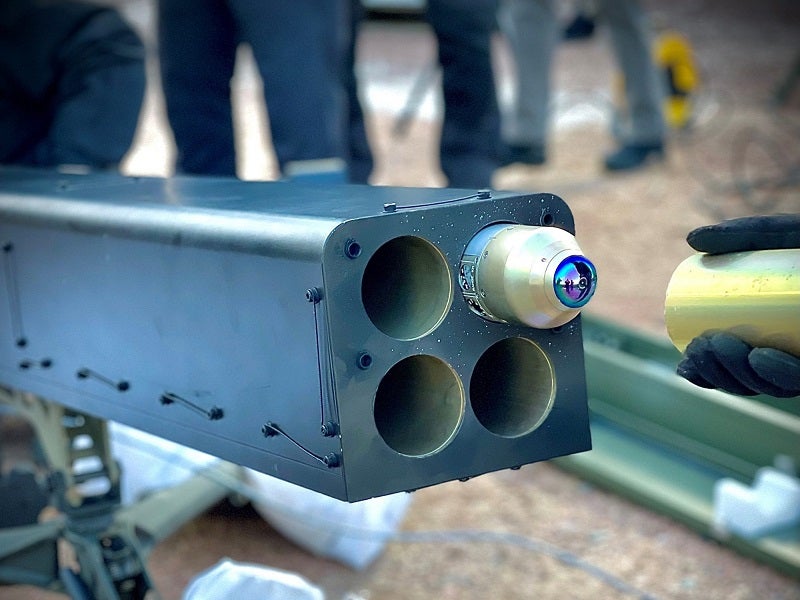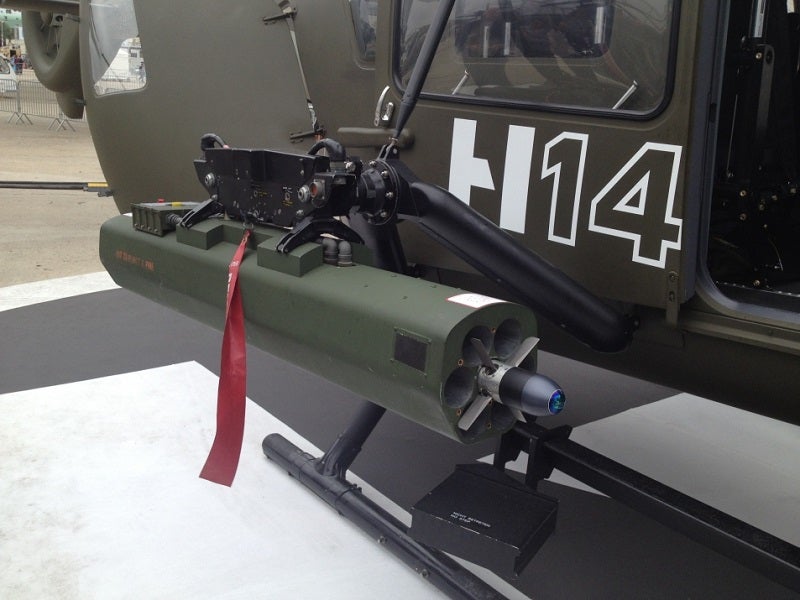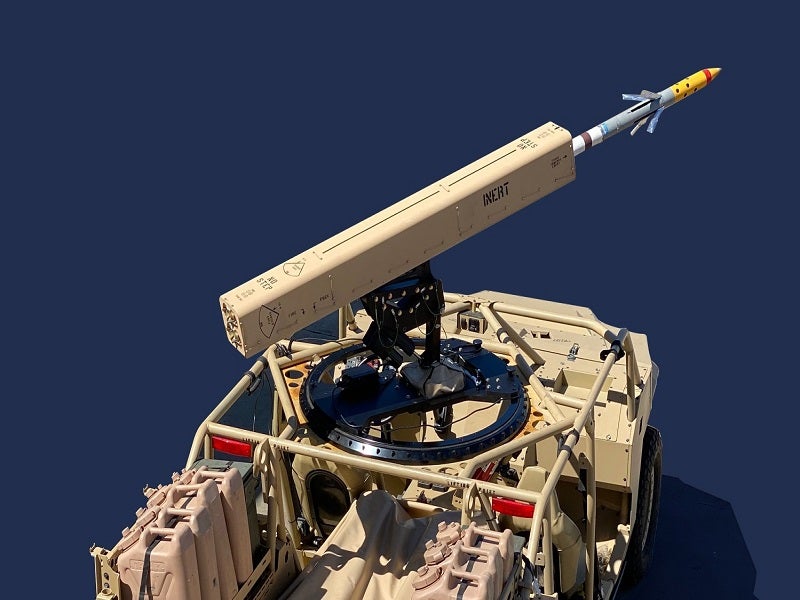The FZ275 Semi-Active Laser (SAL) guided rocket, developed by Thales Belgium (formerly Forges de Zeebrugge), is a precision effector designed to defeat soft and lightly armoured ground targets.
The laser-guided rocket (LGR) is part of Thales’ 70mm/2.75in rocket system, used by the armed forces of more than 50 countries, including Germany, India, and Spain.
The 70mm/2.75in rocket can provide a versatile rocket solution for air, vehicle, and ground-based platforms.
The FZ275 LGR enhances precision in targeting light-armoured threats such as buildings, grounded aircraft, light-armoured vehicles, radar installations, and command stations.
SARISA, an unmanned combat aerial vehicle, developed by Greek company SAS Technology, successfully launched the 70mm rocket during testing overseen by the Hellenic MOD’s General Directorate for Defense Investments and Armaments, in April 2023.
The SARISA drone demonstrated its capability to emulate the functions of attack helicopters and fighter jets, offering a cost-effective alternative with reduced operational risks, thanks to the integration of the rocket system.
FZ275 SAL rocket design and features
The FZ275 LGR is claimed to be the lightest and longest range LGR in the 70mm/2.75in class.
It features an advanced propellant grain, reduced foreign object debris and offers superior accuracy and lethality.
The rocket is 1.8m long, with a calibre of 2.75in, and weighs approximately 12.7kg, including a 4.1kg warhead.
It is compatible with Thales’ existing conventional 2.75in rocket system and is steered using four folding canards surrounding the rocket.
The 70mm LGR has a high first-hit probability and an enhanced stand-off range.
It can be operated by dismounted rapid reaction forces to engage fixed and mobile targets with pinpoint accuracy, minimising collateral damage.
The rocket has low platform vulnerability and requires simple field installation and minimal training for operators.
The FZ275 can be operated day and night to engage a variety of targets, including, but not limited to soft and light armoured vehicles, radar sites, air defence facilities, aircraft on the ground, communications installations, small ships and patrol boats, snipers, and soft bunkers.
The rocket is an ideal solution to bridge the gap between low-cost unguided rockets and missiles.
Land LGR4 Fletcher launcher details
The FZ275 guided rocket was test-fired from the LAND-LGR4 ‘Fletcher’ launcher by Arnold Defense in Sweden in January 2022.
Arnold Defense is a US-based 70mm/2.75 manufacturer of compatible rocket launchers.
Formal certification for firing the FZ275 rocket from the LAND-LGR4 Fletcher launcher was received following the testing.
Arnold Defense’s missile launchers provide users with the flexibility to choose from a range of certified rocket systems based on mission requirements or in-service inventory.
First unveiled in 2017 at the Defence and Security Equipment International event in London, UK, the Land-LGR4 Fletcher is a lightweight and reliable laser-guided weapon launching solution for precision fire support.
The launcher can be fitted on a ground-based vehicle, a watercraft, or operated as an independent platform.
With a maximum range of 8km and a minimum of 1km, it can strike targets with precision at distances up to 6km.
The laser-guided weapon system has a length of 74.5in. The diameter of the pod for holding the rocket is 8in. The launcher has an empty weight of 60lb and can hold four rockets in its four pods.
FZ275 SAL rocket warhead and semi-active laser designator
The FZ275 rocket can carry a high explosive warhead containing 1kg of compound B explosive. The warhead features a pre-fragmented shell type with a kill radius of 9m.
It can be equipped with an impact base fuse at the base to optimise load and splinter efficiency.
The warhead is guided by a semi-active laser, which is compatible with STANAG 3733 or user-defined codes. A laser designator is required to direct the rocket to the target.
The inbuilt seeker can track the specially coded laser that reflects off the target. The target can be marked at various times, including before launch in lock-on before launch mode or after launch in lock-on after launch mode.
A remote source such as a soldier on the ground or an aerial platform, can also be used to mark the target.
FZ275 SAL rocket performance
The FZ275 semi-active laser rocket has a range of between 1.5km and 7km.
The circular error of probability for the rocket is less than 1m at the 6km range. The warhead can penetrate ST37-2-grade steel up to a thickness of 6mm.
The rocket can be used effectively against both stationary and moving targets at speeds of approximately 60km/h.
FZ275 SAL rocket orders and deliveries
In March 2017, Thales was awarded a contract by Airbus Helicopters to integrate the FZ275 LGR on the H145M helicopter.
The contract, awarded in June 2016, followed Thales being named the preferred supplier of guided rocket systems for Airbus Helicopters’ military helicopter range equipped with the HForce weapon system.
Thales and Bharat Dynamics Limited (BLD), a Government of India enterprise, entered into a memorandum of understanding (MoU) in February 2023 intending to establish facilities to produce FZ275 LGR in India.
As a result of this collaboration, BDL joined the global supply chain for the FZ275 LGR, enabling the export of Indian-manufactured components to both current and prospective customers of the 70mm laser-guided rockets.
In June 2024, an MoU was signed between Thales, the Polish technology company WB Electronics, and the defence company AREX to develop a novel remote weapon system equipped with FZ275 LGRs.
The AREX ZMU 03/05 turret system will incorporate both guided and unguided rockets from Thales.








